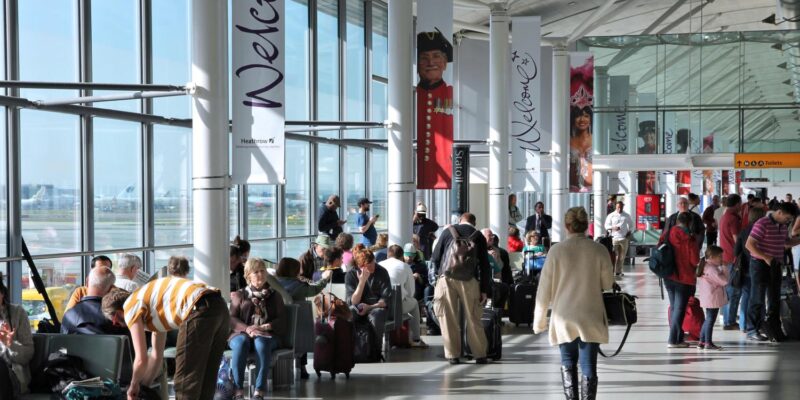Effectiveness of testing for COVID-19: evidence from airline trials at Heathrow Airport
Testing (and quarantine) has become a key part of international travel. Despite a significant vaccination programme in the UK and globally, and a reduction in COVID-19 deaths worldwide, the ability to screen international passengers and place controls on travel remains important in order to limit the spread of the virus. Testing is therefore likely to be used for international travel for at least some countries for the foreseeable future.
Current testing requirements for international air travel vary by country in terms of the type of test required, when testing is required, and how many tests are required. Testing requirements have also changed over time, often with little notice provided to passengers and the aviation sector in general, disrupting travel and creating confusion.
Part of the reason for the differences in testing requirements across countries, and the changes, is uncertainty around the role of pre-symptomatic and asymptomatic transmission of COVID-19, and the sensitivity of different types of tests. This has led to the introduction of complex testing regimes, often requiring multiple tests at different time points. In the UK, the testing regime currently costs arriving passengers £210, in addition to a pre-departure test to enter the UK and any testing required as part of the outbound trip. If passengers arrive from a ‘red list’ country, they are required to quarantine at a hotel at a cost of £1,750 for ten days.
As international travel gets set to resume, the ability to reopen borders safely, and to do so at scale, will be limited by the capacity for testing and the effect of testing on passenger volumes (e.g. due to the cost). It is therefore important to develop and understand the empirical evidence base on the effectiveness of air passenger testing.
In late 2020, COVID-19 testing for international passengers started taking place at Heathrow Airport and on a trial basis for several airlines operating at Heathrow. The trials run by Virgin Atlantic, American Airlines / British Airways / oneworld, and United Airlines were set up on routes between the Caribbean and the USA to the UK to generate an evidence base for future policy. Additionally, Collinson and Cignpost started providing testing facilities at Heathrow to meet the pre-departure testing requirements for passengers leaving the UK. In total, data from around 71,000 COVID-19 tests has been collected over the last six months. This report analyses this real-world data to provide insights into the effectiveness of different testing regimes.
The key findings from the analysis of the data are as follows.
- There is some evidence that passengers actively choose flights where there is COVID-19 testing compared to those without such testing.
- Approximately three quarters of cases of COVID-19 can be identified with pre-departure, on-departure, or on-arrival testing. This finding is substantially higher than previous estimates of the effectiveness of pre-departure testing, but is consistent with findings from a study at Toronto Pearson Airport.
- Infection levels detected by some PCR tests1 at Heathrow Airport appear to be in line with the level expected from rates in the community.
- LAMP testing and antigen testing show similar effectiveness, although they identify fewer positive cases than would be expected when comparing them to community prevalence rates. The lower effectiveness may be explained by unobserved selection factors (e.g. deprivation level or risk-averse behaviour of passengers), different population samples, as well as test sensitivity.
- While antigen testing appears to identify fewer cases than LAMP testing, our report on rapid testing2 shows that the specific antigen test used (e.g. the brand of test) can have a significant impact on the antigen test sensitivity.
- As part of our study, we conducted interviews with Heathrow Airport and the airlines that participated in the trials to understand the operational factors associated with implementing different testing schemes that affect passengers and providers. We have identified two main factors that are likely to affect operations in the aviation sector if testing remains in place as demand for air travel returns: lack of consistent local and international standards; and suitability of the existing infrastructure.
- Testing schemes create monetary and non-monetary (e.g. time) costs for passengers and affect the operations of airlines and airports. However, ensuring that there is sufficient and easily accessible capacity for testing, at the lowest cost possible, would allow the aviation sector to restart at scale and therefore help with recovery.
The outputs from this work are intended to inform the UK’s Global Travel Taskforce, which was re-established in early 2021, but the results are relevant for all countries using testing.

